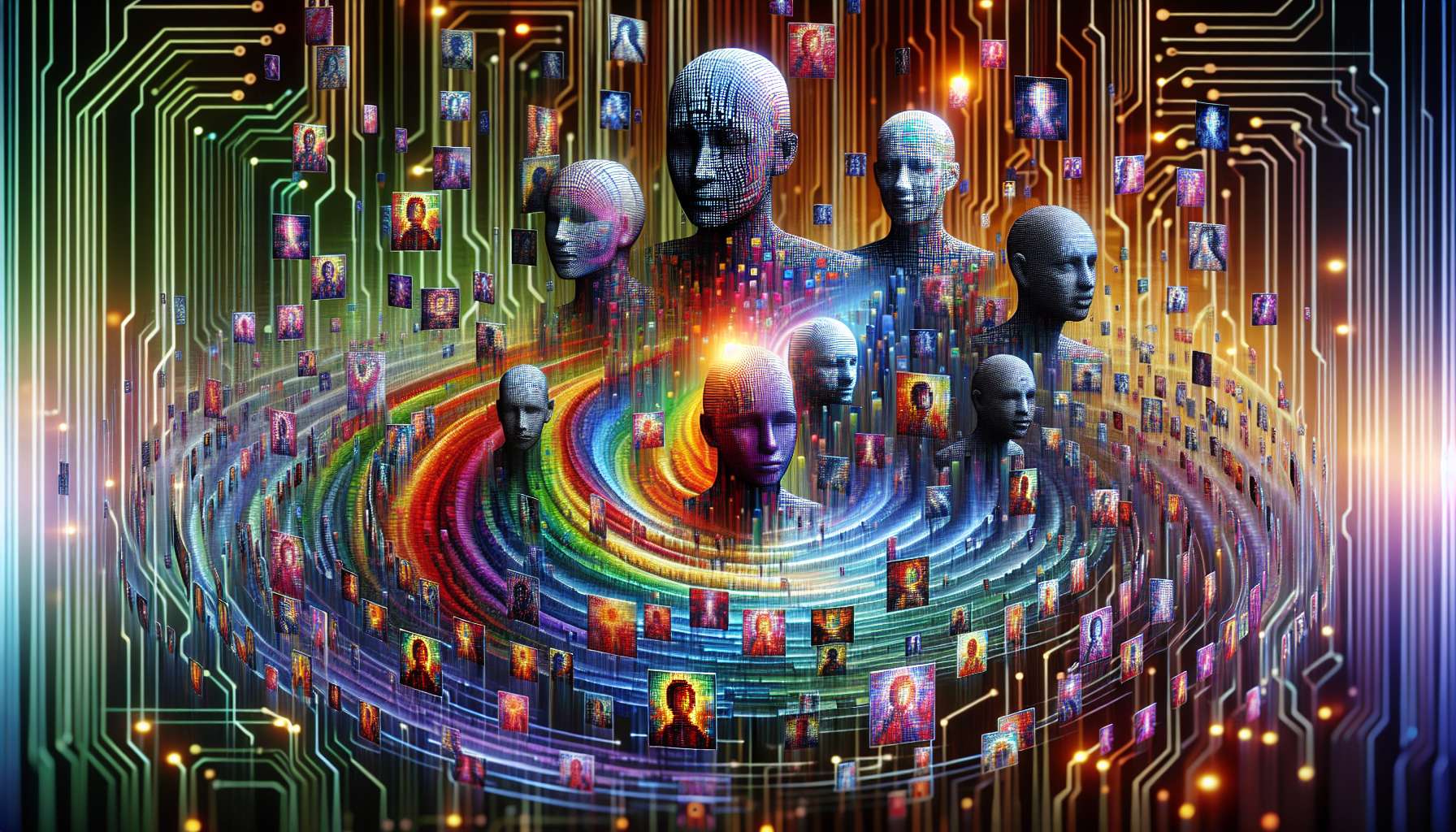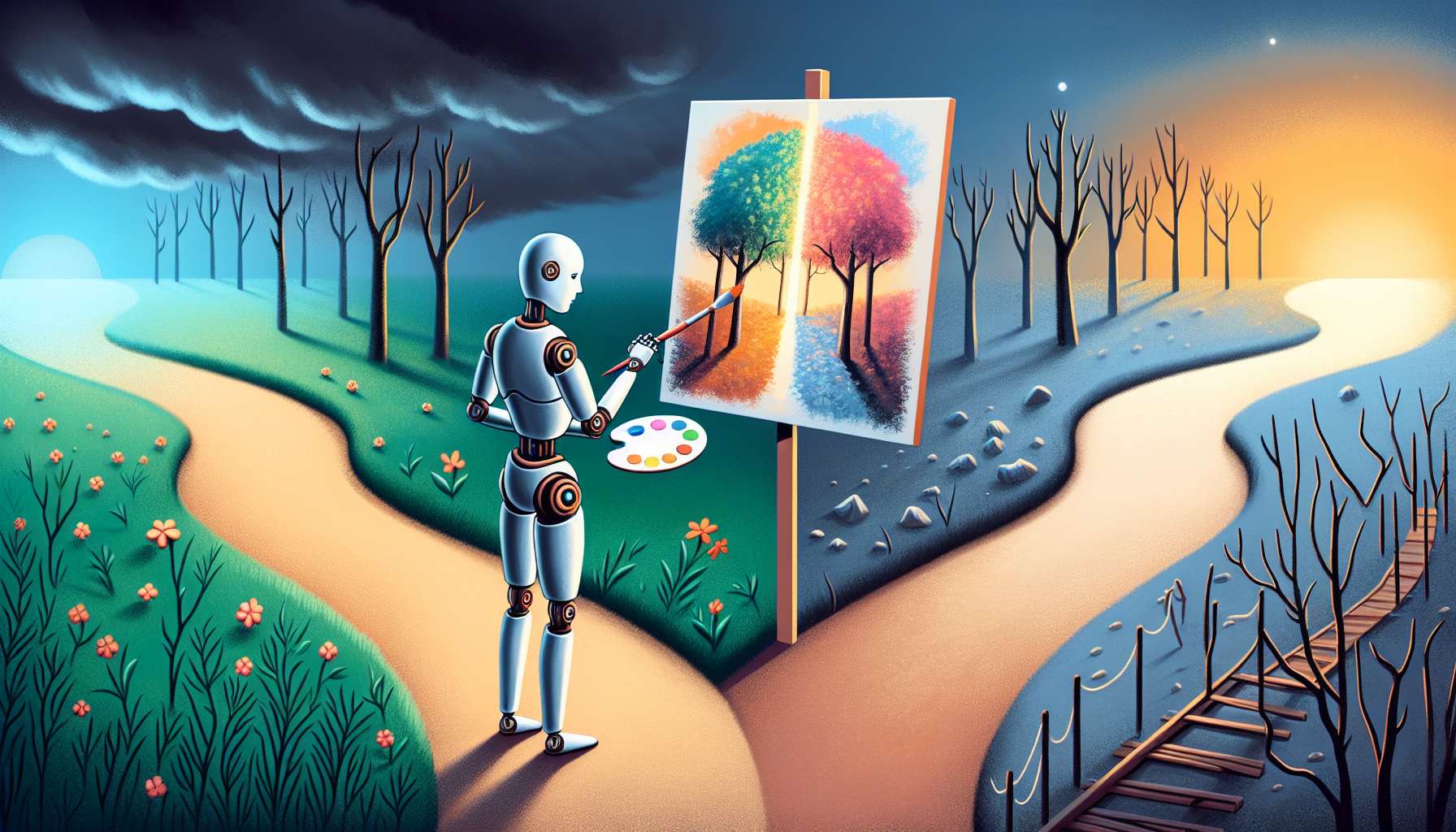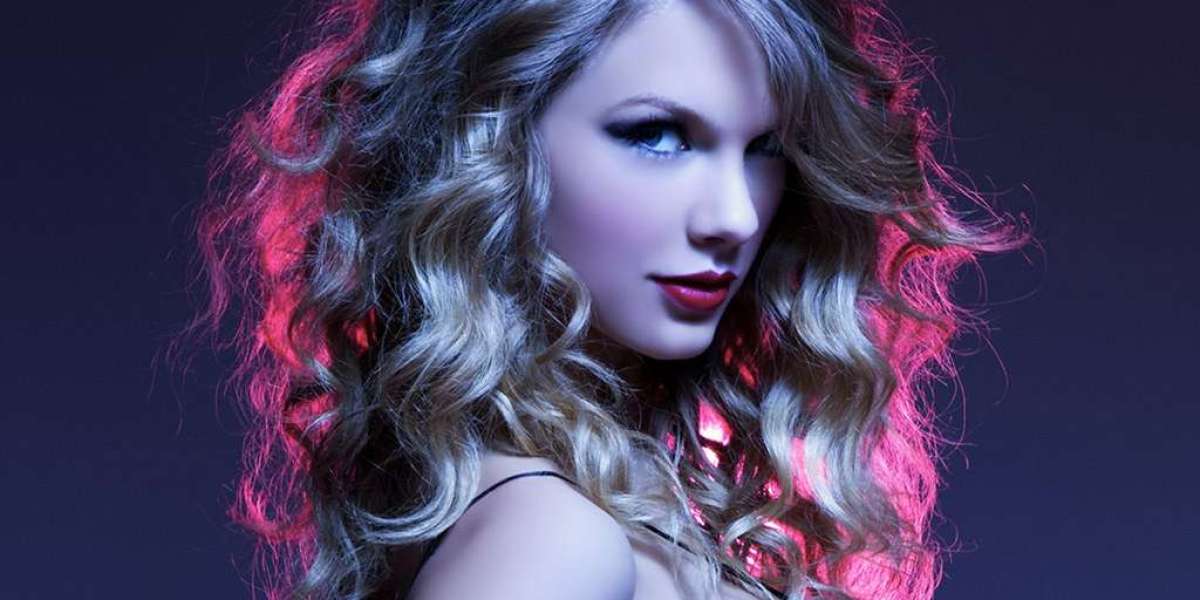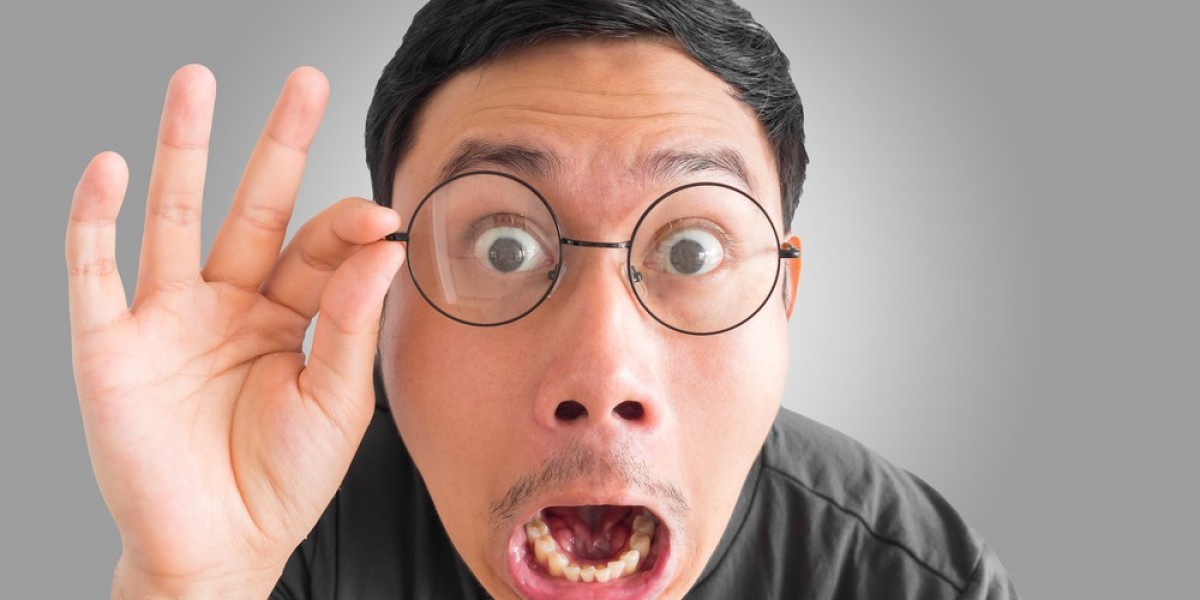Are Taylor Swift's AI pictures, created using deepfake technology, pushing the boundaries of digital ethics? With realistic AI representations of Taylor Swift surfacing online without her consent, the digital community is at a crossroads.
These Taylor Swift AI-generated likenesses, which are shockingly indistinguishable from authentic photographs, raise profound questions about the ownership and control of one’s digital identity. As these images proliferate through social media channels and digital platforms, they not only challenge the concept of consent but also blur the lines between reality and artificial fabrication.
The implications of such technology are vast, impacting not only celebrities like Taylor Swift but potentially anyone with an online presence. This article examines the ramifications of these AI manifestations, exploring potential legal actions and the critical conversation they spark about consent in the age of artificial intelligence.
Key Takeaways
- The widespread proliferation of AI-generated images using Taylor Swift’s likeness without authorization has sparked ethical concerns, with potential legal action indicating the gravity of digital identity misuse and consent violations.
- Advancements in AI technology facilitate the creation of highly realistic and customizable visual content, raising serious ethical and legal questions regarding the responsible use of such potent tools and their respect for individual rights.
- Legislative responses like the No AI FRAUD Act and state laws criminalizing non-consensual pornographic deepfakes demonstrate a societal and legal shift towards addressing the use of AI in generating images, with discussions on cultural representation and the need for comprehensive regulations.
Exploring the Controversy of Taylor Swift's AI Images

Taylor Swift's AI images have ignited a significant debate, captivating our collective imagination. At the heart of the matter lies the unstoppable spread of AI-generated photos across the Internet, morphing the visage of Swift into unauthorized contexts.
Journalists like Clare Duffy have vocally expressed concerns, questioning the boundaries of ethics as these likenesses proliferate across social media platforms. The issue of deepfake pornography further complicates the ethical landscape, raising serious questions about consent and the misuse of digital likenesses. Yet, even as these images flood our feeds, a looming question persists: Will Taylor Swift take legal action against the graphic misuse of her image?
This controversy holds substantial implications, with a legal and moral reckoning looming on the horizon. As the virtual and real collide, the sanctity of individual likeness is under siege by algorithms capable of generating hyper-realistic facsimiles. Swift, a pop icon, finds her image ensnared in the web of artificial intelligence—a scenario that was once the realm of science fiction now starkly real and laden with potential for legal precedent.
Observers and stakeholders alike clearly recognize the gravity of this situation. The prospect of Taylor Swift pursuing legal action against the creators and distributors of these AI photos is a watershed moment, signaling a possible turning point in how we, as a society, grapple with the consequences of our digital creations.
It is a stark reminder that behind every AI-generated image is a person—a person with rights, a person with agency, a person who may not consent to their digital representation being manipulated and disseminated without permission.
Thus, a collision of art, technology, and identity is inevitable. As we delve deeper into the mechanics of this digital dilemma, one must wonder how such a phenomenon came to be, and what can be done to navigate the treacherous waters of digital consent.
Unpacking the Technology Behind Swift AI Creations
Sophisticated artificial intelligence technology, not magic, leads to the creation of Taylor Swift's AI images. At its core, AI image generators analyze billions of data points in the form of images to learn and replicate visual characteristics.
This technology, similar to what powers AI Girlfriend Simulator, offers a glimpse into the potential of AI to create highly personalized digital experiences, whether in the form of interactive companions or realistic visual representations.
From the debut of DALL-E to the more advanced DALL-E 3, the tech landscape has seen a surge of platforms like Google’s ImageFX and Stability AI’s DreamStudio, as well as Getty Images’ Generative AI, each bringing its flavor to the table.
These technological marvels offer an unprecedented level of customization. Tools like Adobe Firefly and Microsoft Designer, powered by DALL-E 3, allow users to input reference images, ensuring that the resulting AI creations align closely with the user’s vision.
The possibility to tailor-make an image or even a picture, has never been more accessible, and with it comes the capability to produce a limitless array of visual content, including lifelike depictions of individuals like Swift and pictures generated by AI algorithms.
Yet, with great power comes great responsibility. The technology’s complexity and potential for misuse are masked by the ease of creating these Swift AI images. It is a double-edged sword—on one hand, a boon for creators seeking to push the boundaries of visual expression; on the other, a tool that could be wielded carelessly, with little regard for the ramifications on individuals’ rights and society’s ethical standards.
Therefore, as we marvel at the capabilities of Swift AI technology, we must also ponder the implications of its use. It’s a moment to reflect on the balance between innovation and integrity, where the creators behind the screen hold the keys to either uphold or undermine the sanctity of digital identity.
The Cultural Impact of AI on the Image of Public Figures

AI-generated images pose a global cultural challenge extending beyond individual cases like Taylor Swift’s. AI systems, trained on datasets that reflect certain cultural norms—like the ubiquitous American smile—can inadvertently create a visual monoculture when interpreting the facial expressions of public figures.
When an AI’s training data is predominantly sourced from cultures that emphasize smiling, it may misrepresent individuals from societies where a smile conveys different meanings.
This potential for cultural misinterpretation is not a trivial matter. The dominant cultural perspective within AI training data could lead to biased representations of emotions, affecting not just the image but the perceived intentions of celebrities and other public figures across the internet.
The act of smiling, for instance, is nuanced and interpreted differently around the world, yet AI might render this expression uniform, stripping away the richness of cultural diversity.
The risk of AI systems replicating social biases and harmful views is undeniable. The training data—often a reflection of the society from which it is sourced—has the potential to perpetuate stereotypes, casting a long shadow over the authenticity of AI images.
The Kansas City Chiefs, as an example, may appear in AI-generated promotional materials, but if the AI does not account for cultural sensitivities, it could inadvertently perpetuate harmful representations.
It is, therefore, imperative to consider the broader impact of AI on our cultural lexicon. As these technologies become more ingrained in our everyday lives, the question looms: What will happen to our understanding of real people and their diverse emotional expressions?
The answer lies in how we choose to direct the AI narrative—will we allow it to act unchecked, or will we guide it towards a future that respects and celebrates cultural diversity?
Case Study: Taylor Swift's Stand Against AI Misuse
Beyond a singular event, the Taylor Swift AI controversy serves as a case study in artificial intelligence misuse. The unauthorized use of Swift’s image in AI-generated deepfake content was nothing short of terrible, igniting a firestorm of attention and concern over the abuse of AI.
In response to this scandal, social media platforms took decisive action, suspending accounts and blocking searches related to Taylor Swift, to stem the spread of such content.
This incident became a flashpoint for public outrage and a catalyst for activism, with many urging for a change in the legal landscape to better protect against AI abuses.
The high-profile nature of the case involving a pop star of Swift’s magnitude has been instrumental in propelling discussions on the need for stricter regulations against harmful AI-generated deepfakes.
The possibility of Swift suing those responsible for the misuse of her image transcends legal recourse—it signals the future of digital rights. It embodies the struggle of countless individuals whose likenesses have been manipulated without consent, and it underscores the need for a robust legal framework that can keep pace with the rapid advancements in AI.
In the wake of such a stark example of AI misuse, we are compelled to ask: What ethical considerations must be taken into account when creating AI images? And how can we ensure that the rights of individuals are not trampled in the digital arena?
Ethical Considerations in the Creation of AI Images

AI-generated images’ ethical landscape is both complex and critical. Advancements in deepfake technology have led to the creation of hyper-realistic, non-consensual intimate images, prompting urgent debates on consent, privacy, and privacy concerns.
Legislation like the No AI FRAUD Act has emerged, reflecting an increased legal and societal awareness that demands consent for the use of one’s likeness and penalizes unauthorized deepfake distribution.
At the state level, measures such as New York’s criminalization of non-consensual pornographic deepfakes highlight the mounting concerns and the necessity for a consistent legal framework to address these ethical violations.
Furthermore, the use of AI to reflect facial expressions based on a single culture’s norms raises questions about cultural insensitivity and the accuracy of such portrayals.
The homogenization of visual narratives through AI’s dominance is an ethical quandary that cannot be overlooked. With the potential loss of unique cultural expressions, we must consider the implications of a world where AI dictates the visual language of emotions.
Moreover, AI-generated images that utilize elements of copyrighted works without authorization pose significant challenges to the attribution and respect for original creations.
Supreme Court rulings like Andy Warhol’s Prince image case highlight the profound implications for AI and image rights within the evolving legal landscape. Experts anticipate further regulation, possibly including disclosure requirements, to address the myriad ethical and legal concerns surrounding AI-created deep fakes.
And for celebrities, the unauthorized use of their likeness could be contested under the right of publicity, even though the copyright of a photo typically belongs to the photographer, signaling a complex legal battleground.
The Future of AI and Celebrity Image Rights
Artificial intelligence and celebrity image rights are intertwining at a pace like never before. Federal efforts like the DEEP FAKES Accountability Act and the DEFIANCE Act indicate a response to the challenges of digital consent and data protection. At the state level, a wave of laws against non-consensual deepfake distribution points to an expanding legal recognition and response.
Proposed legislation such as the No AI FRAUD Act signifies a strong intent to treat the nonconsensual sharing of digitally altered explicit images as a federal crime. Despite the active role of U.S. courts in defining legal boundaries for AI image usage, significant decisions granting AI rights remain yet to be seen.
For AI image generation to progress responsibly, transparent guidelines, adherence to legal advice, and compatibility with data protection and copyright laws are crucial. The emergence of ‘clean model’ approaches, where AI is trained exclusively on appropriately licensed images, is indicative of proactive strategies to mitigate legal and ethical risks.
AI image generators like Getty Images’ Generative AI, which utilize exclusively licensed content, offer a model of commercial safety and clarity regarding image rights.
Moreover, allowing creators to opt into the use of their work by AI, with the potential for royalties, presents an emerging model that seeks to balance AI advancements with individual rights.
Summary
From the shockwaves sent through the digital landscape by AI-generated Taylor Swift images to the intricate ethical and legal considerations, our exploration reveals the delicate balance between innovation and respect for individual rights.
As we stand on the precipice of a new digital frontier, it is clear that the future will be shaped by our collective commitment to uphold the dignity of personal identity in an increasingly virtual world.
Frequently Asked Questions
What are Taylor Swift's AI pictures?
An unauthorized AI-generated explicit image of Taylor Swift surfaced on social media platforms Twitter and Facebook in January, raising significant concerns about the right to publicity and intellectual property. The creation of the image involved artificial intelligence technology and was done without Swift’s consent. The controversy erupted around January 31, 2021, when the image was widely circulated.
Are AI images of celebrities legal?
The unauthorized exploitation of a celebrity’s image, including deepfake pornography, is a clear infringement of rights. This violation is not just a breach of privacy but also an infringement on the intellectual property and the right of publicity that celebrities legally hold over their image and likeness.
What sparked the controversy over Taylor Swift's AI images?
The controversy over Taylor Swift's AI images was sparked by their unauthorized use in deepfake pornography, raising major ethical and legal concerns. Well, this may help you as AI image generators to create highly realistic and customizable pictures.
How do AI image generators create pictures like those of Taylor Swift?
AI image generators contribute to a visual monoculture by creating pictures like those of Taylor Swift by analyzing existing images and replicating visual characteristics, often customized further with advanced features like inputting reference images. This allows them to synthesize new, realistic-looking images.
What cultural impacts can AI-generated images have?
Intellectual property concerns arise as AI-generated images can perpetuate biases and misrepresent emotions, leading to a visual monoculture. This has significant cultural impacts.
What legal actions are being taken against the misuse of AI technology?
Several new laws, including the No AI FRAUD Act and the DEEP FAKES Accountability Act, aim to enhance data protection by making the creation and distribution of deepfakes without consent illegal.
How might the future of AI and celebrity image rights unfold?
The future of AI and celebrity image rights may involve stricter regulations, ‘clean model’ AI training approaches, and options for creators to consent to the use of their work by AI. This will balance innovation with the protection of individual rights.



